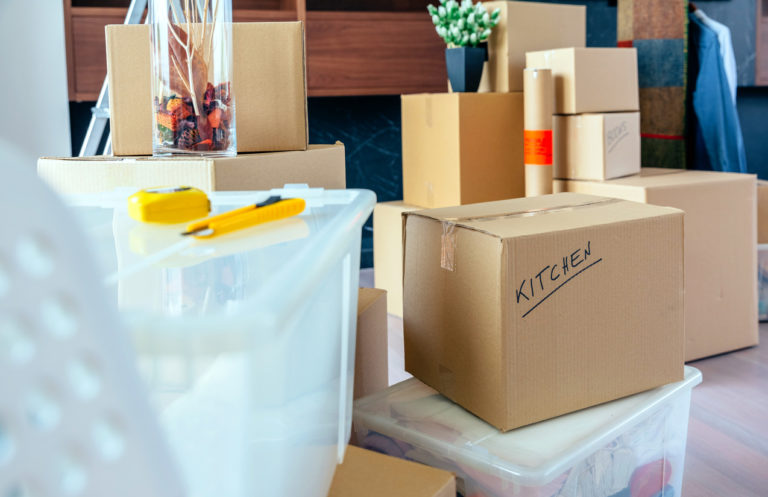Preparing Your Things for Long-Term Storage
When it comes to long-term storage, proper preparation is essential to ensure the safety and condition of your belongings. Whether you are storing furniture, clothing, or sentimental items, taking the necessary steps beforehand can help prevent damage and maintain their quality over time. In this article, we will discuss some important tips for preparing your things for long-term storage.
Sort and Organize
Before you start packing your items for storage, it’s important to sort and organize them. This process will not only help you declutter but also make it easier to locate specific items when you need them in the future. Begin by categorizing your belongings into different groups based on their type, size, or usage. This will help you determine the appropriate packing materials and storage conditions for each category. Once you have sorted your items, consider donating or selling anything that you no longer need or use. This will help lighten your load and make the storage process more manageable.
Clean and Dry
Cleaning your belongings thoroughly before storing them is crucial. Any dirt, dust, or stains left on your items can cause permanent damage or attract pests. Start by wiping down furniture surfaces, vacuuming upholstery, and polishing wooden items. For clothing and fabrics, make sure to wash and completely dry them before packing. Remember, moisture can lead to mold and mildew growth, so ensure that everything is dry before storage. For electronics, remove any batteries and ensure that they are completely powered off. Dust them off and wipe them down with a soft cloth. Consider using electronics-specific cleaning solutions to remove any fingerprints or smudges.
Disassemble Furniture
If you are storing furniture, consider disassembling it to save space and prevent damage. Take apart tables, bed frames, and shelves, keeping all the necessary screws and small parts in a labeled bag. Wrap each piece in moving blankets or furniture covers to protect them from scratches and dust. Be sure to keep assembly instructions or take pictures to help you reassemble the furniture later. For larger furniture pieces that cannot be disassembled, such as sofas or mattresses, use covers specifically designed for these items. This will help protect them from dust, dirt, and potential stains.
Protect with Proper Packaging
Investing in high-quality packaging materials is essential for long-term storage. Use sturdy cardboard boxes in various sizes to pack smaller items. Make sure to fill any empty spaces in the boxes with packing peanuts or bubble wrap to prevent shifting during transportation. For fragile items such as glassware or electronics, wrap them individually in bubble wrap or foam before placing them in boxes. Seal the boxes with strong packing tape to keep out dust and insects. For clothing and textiles, consider using breathable garment bags or vacuum-sealed storage bags. These will help protect your items from moisture, pests, and dust while maximizing space efficiency.
Consider Climate Control
Climate control is particularly important if you are storing sensitive items such as electronics, wooden furniture, or artwork. Extreme temperatures and humidity can cause irreversible damage to these items. If possible, choose a storage facility that offers climate-controlled units. These units maintain a consistent temperature and humidity level, providing optimal conditions for your belongings. If climate control is not available, consider using moisture absorbers or desiccant packs inside your storage containers. It’s also worth noting that certain items, like wine collections or delicate musical instruments, may require specialized storage conditions. Research and consult experts or professionals in these fields to ensure proper storage.
Label Everything
Proper labeling is often overlooked but can save you a lot of time and effort in the long run. Clearly label each box with its contents and destination room to facilitate easy retrieval when you need something. You can use colored markers or pre-printed labels for this purpose. Consider creating an inventory list or spreadsheet to keep track of all the items you have stored. This will help you quickly locate specific items without having to dig through multiple boxes. Additionally, consider labeling boxes with any special handling instructions or fragile items. This will alert anyone handling the boxes to exercise caution and ensure that delicate items are treated with care.
Choose the Right Storage Facility
Selecting a reputable storage facility is crucial for the safety and security of your belongings. Research different options in your area and read reviews from previous customers. Look for facilities that have 24/7 surveillance, secure access controls, and pest control measures. Additionally, consider the location and accessibility of the facility to ensure convenience when you need to retrieve your items. Visit the facility in person if possible to assess its cleanliness, organization, and overall condition. Talk to the staff and ask about their security protocols and maintenance practices. A well-maintained and secure storage facility will give you peace of mind knowing that your belongings are in good hands.
Regular Checkups
Even with proper preparation, it’s important to periodically check on your stored items. Visit the storage unit every few months to inspect for any signs of damage, pests, or moisture. If necessary, take preventive measures such as applying insect repellents or using dehumidifiers to maintain the condition of your stored belongings. Regular checkups allow you to address any issues promptly before they escalate into major problems. During these checkups, make sure to keep a record of any changes or damages you notice. Take photos as evidence, especially if you plan to file an insurance claim. Keeping a record will also help you keep track of the condition of your belongings and assist in organizing your storage unit more efficiently.
Insurance Coverage
While you take all the necessary precautions to protect your belongings, it’s wise to consider obtaining insurance coverage for your stored items. Check with your homeowner’s insurance provider or inquire about storage insurance options from the storage facility. Having insurance provides you with peace of mind knowing that your belongings are financially protected in case of unexpected events such as theft, fire, or natural disasters. Review the insurance policy carefully to understand the coverage limits, exclusions, and any additional requirements or documentation needed. It’s essential to have a clear understanding of the terms and conditions to ensure that your stored items are adequately protected.
Security Measures
Apart from selecting a secure storage facility, there are additional security measures you can take to safeguard your stored items. Use sturdy padlocks to secure your storage unit and consider adding an additional layer of security, such as a door alarm or security cameras. Avoid sharing your access code or keys with unauthorized individuals, and keep a record of your lock combination or key in a safe place. It’s also advisable to refrain from discussing your storage unit contents with others to maintain privacy and security. The more precautions you take, the better protected your belongings will be.
Properly Store Documents
If you plan to store important documents such as passports, birth certificates, or legal papers, take extra care in their storage. Place them in waterproof and fire-resistant containers or safes. Keep these containers in a separate area within your storage unit to ensure their safety. Consider making digital copies of essential documents and store them securely online as an additional backup. Label the document storage containers clearly and keep an inventory of the documents you have stored. This will make it easier for you to locate specific documents when needed and provide an extra layer of organization.
Maintaining Vehicles in Storage
If you are storing vehicles like cars, motorcycles, or boats for an extended period, there are specific steps you should take to maintain their condition. Clean the vehicle thoroughly, including the interior and exterior, before storage. Remove any dirt, debris, or corrosive substances that could potentially damage the vehicle’s surfaces. Change the oil and oil filter to prevent contaminants from sitting in the engine for an extended period. Consider topping up other fluids, such as coolant and brake fluid, to ensure they are at the appropriate levels. It’s also a good idea to treat the fuel with a fuel stabilizer to prevent it from deteriorating and causing engine issues. Properly inflate the tires to the recommended pressure and consider using tire cradles or jacks to relieve pressure and prevent flat spots. Cover the vehicle with a breathable car cover that provides protection against dust, dirt, and UV rays. For boats, drain the fuel tank or add a fuel stabilizer to prevent fuel degradation. Remove any valuables or electronics from the boat to protect them from theft or damage. If possible, store the boat on a trailer to alleviate pressure on the hull and allow for better airflow. Regularly check on the stored vehicle or boat to ensure that no damage or issues have arisen. Consider starting the engine periodically or turning on the boat’s systems to keep them in working order. Follow any specific manufacturer guidelines for long-term storage to maintain the vehicle’s integrity.
Regular Communication
If you are storing your belongings in a facility managed by others, it’s essential to maintain regular communication with the storage staff. Provide them with updated contact information and inform them of any changes in your storage plan or access requirements. This ensures that they can reach you if necessary and helps foster a positive relationship with the facility management. If you have any specific concerns or questions about the storage conditions or policies, don’t hesitate to reach out to the facility staff. Clear and open communication helps create a better understanding and ensures that both parties are on the same page regarding the storage arrangement.
Conclusion
Preparing your things for long-term storage requires careful planning, organization, and attention to detail. By sorting and organizing your belongings, cleaning and protecting them with proper packaging materials, and selecting the right storage facility, you can ensure the safety and condition of your items over time. Regular checkups, security measures, and insurance coverage further contribute to a worry-free storage experience. Remember to label your items, maintain regular communication with the storage facility, and take appropriate measures for specialized items such as vehicles or important documents. With proper preparation and ongoing vigilance, you can have peace of mind knowing that your belongings are safely stored and will be in excellent condition when you retrieve them in the future.
Georgetown Moving is a Full-Service Storage Company
Storage with Georgetown is easy. Here’s how it works:











